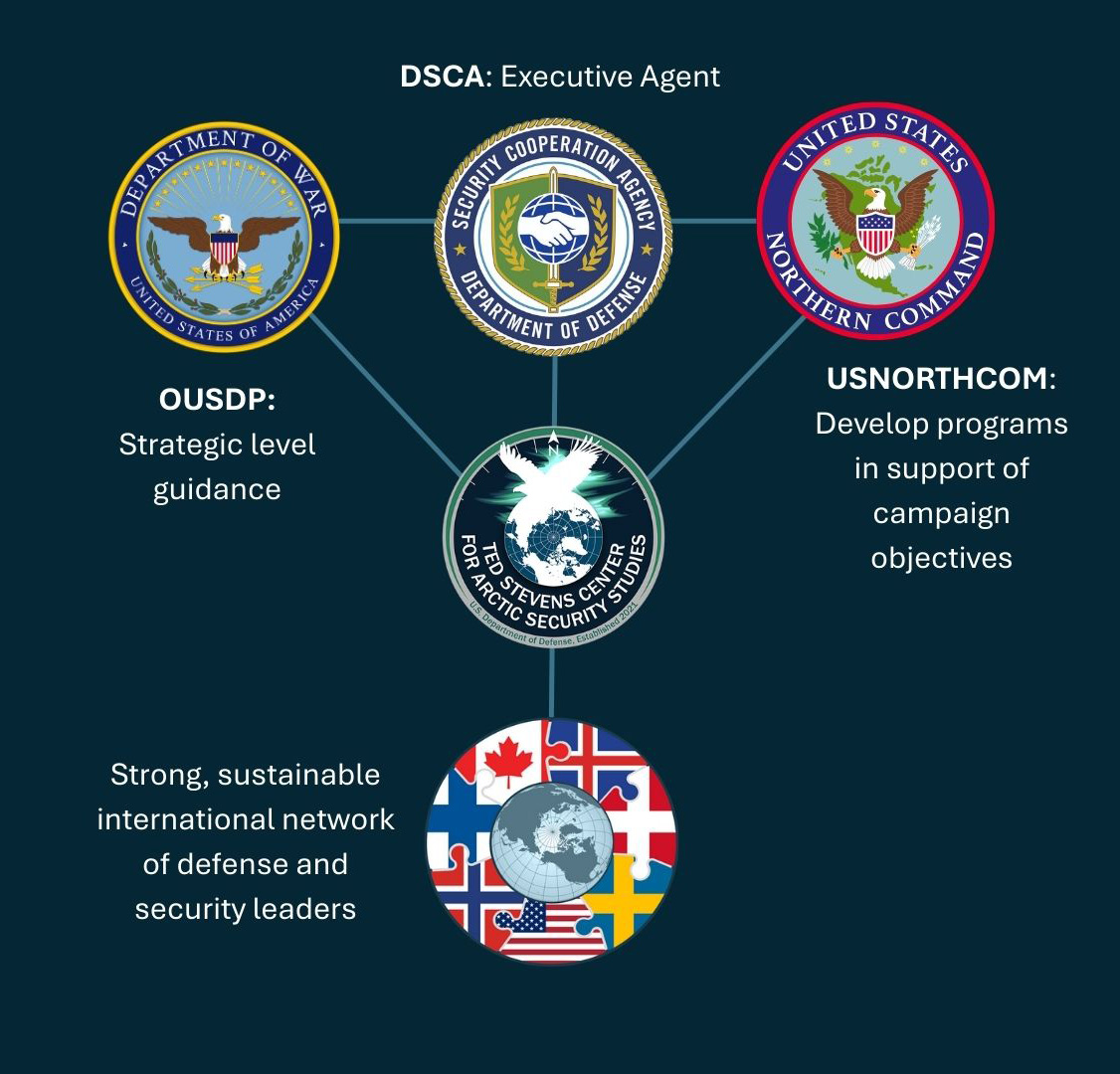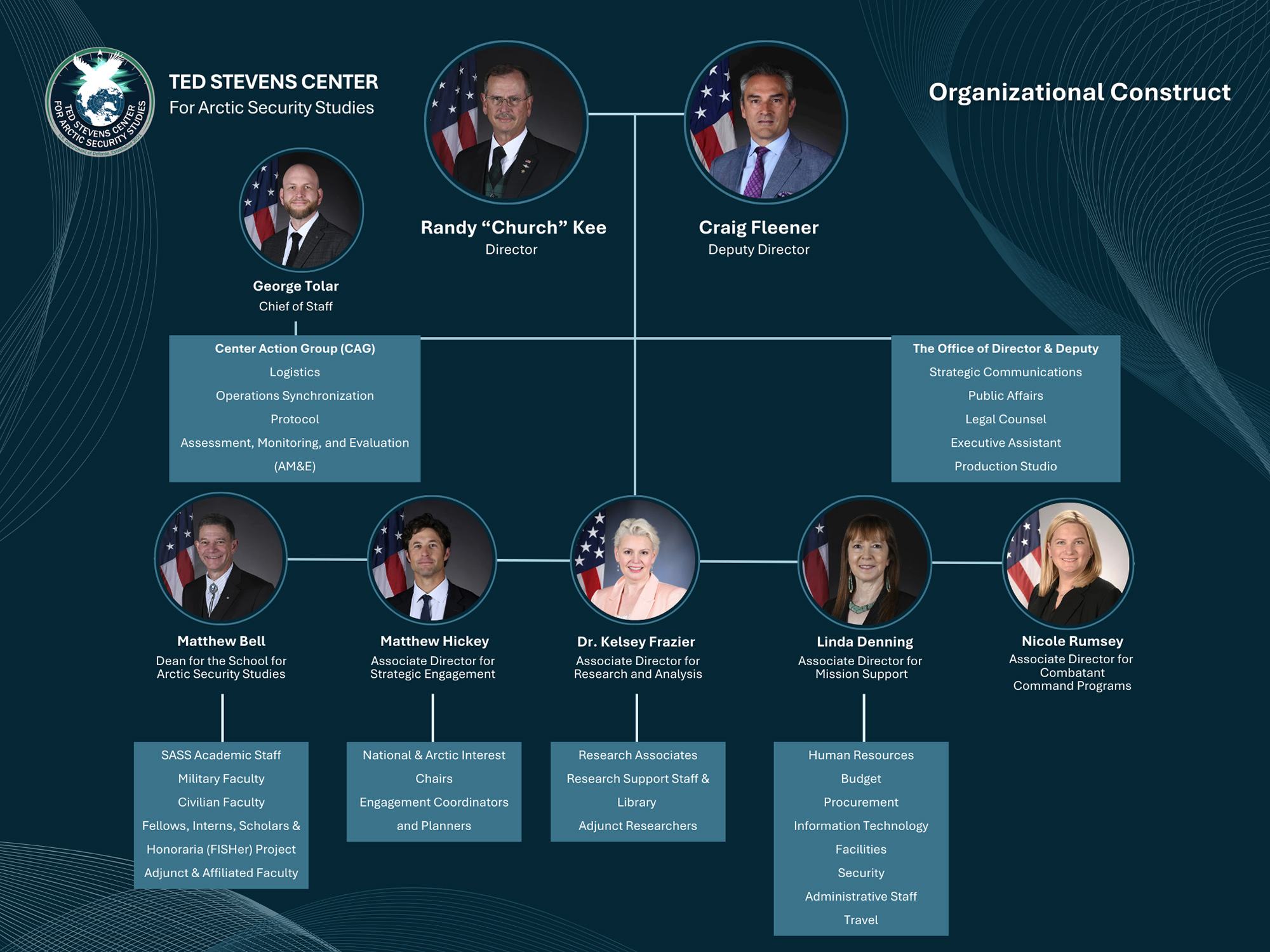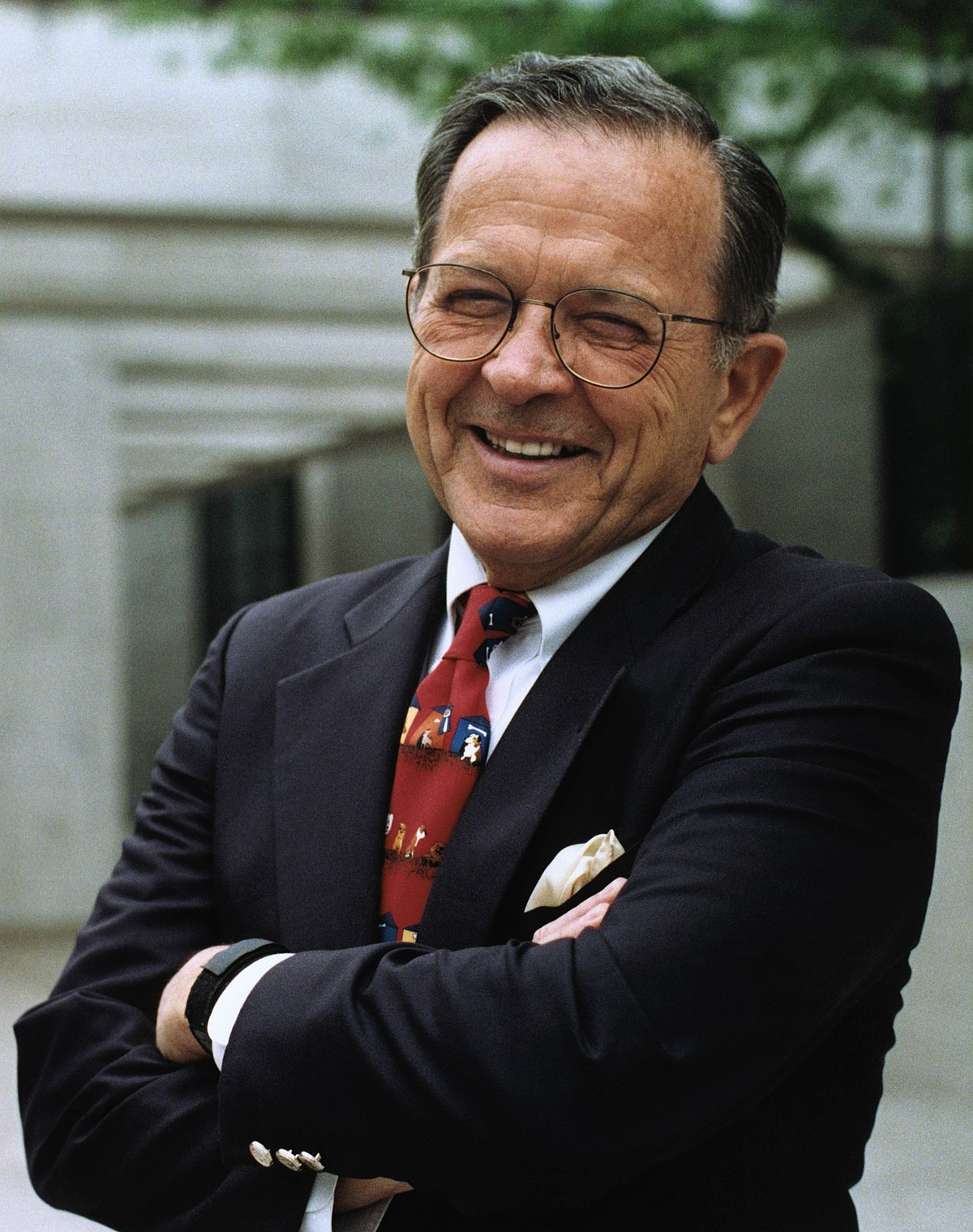About the Ted Stevens Center for Arctic Security Studies
Overview
The Ted Stevens Center for Arctic Security Studies is a U.S. Department of War Regional Center officially established June 9, 2021, on Joint Base Elmendorf-Richardson in Anchorage, Alaska. TSC addresses regional and global security by convening military and civilian security practitioners of the United States and our Allies and partners across the Arctic region to promote discussion and understanding to advance collaborative security solutions.
The center supports U.S. Northern Command’s campaign objectives through creative and innovative programs aimed at understanding and addressing the strategic implications of current and emerging Arctic security challenges. The center utilizes a multilateral and multi-dimensional approach across a range of executive-level courses to advance Arctic awareness and establish a comprehensive understanding of the Arctic operating environment. In doing so, TSC builds a network of like-minded security practitioners, leaders, and decision-makers to reinforce the rules-based order in the Arctic.
An important instrument of the National Strategy for the Arctic Region, the center advances U.S. Department of War Arctic priorities through our three lines of effort: executive education, research & analysis, and strategic engagement. The Stevens Center is guided by the principles of innovation and experimentation, where the thoughtful exchange of ideas promotes a peaceful, prosperous, and secure Arctic region.
DOW’s Regional Center Mission
Authorized under 10 U.S.C. § 342, the DOW Regional Centers for Security Studies (RCs) are international venues for bilateral and multilateral research, communication, exchange of ideas, and training involving U.S. and foreign military, civilian, and nongovernmental participants, utilizing their unique academic forums to build strong, sustainable international networks of security leaders. RCs are unique among institutional capacity building providers, as they target a primarily multilateral, inter-ministerial, senior-level audience.
The RCs support the National Defense Strategy objective of strengthening alliances and attracting new partners by: (1) Offering executive-development strategic-security studies, research and outreach in rigorous outreach programs that foster long-term collaborative relationships; (2) Developing and sustaining relationships and communities of interest among security practitioners and national security establishments, especially in defense, throughout the region; and (3) Enhancing enduring partnerships among the nations of the region.
While RCs support a range of policy priorities directed by the Under Secretary of War for Policy and Geographic Combatant Commands, and requests from foreign partners, they prioritize three functional areas, in accordance with their statutory mandate: territorial and maritime security, transnational and asymmetric threats, and defense sector governance.

TSC Structure


Our Namesake
The Ted Stevens Center for Arctic Security Studies is deeply honored to carry on the invaluable work of Senator Ted Stevens, a legendary contributor to U.S. and Allied Arctic Security and Defense.
Theodore Fulton Stevens Sr. (Nov. 18, 1923 – Aug. 9, 2010) was an American politician and lawyer who served as a U.S. Senator from Alaska from 1968 to 2009. He was the longest-serving Republican Senator in history at the time he left office.
Stevens served for six decades in the American public sector, beginning with his service as a pilot in World War II. In 1952, his law career took him to Fairbanks, Alaska, where he was appointed U.S. Attorney the following year by President Dwight D. Eisenhower. In 1956, he returned to Washington, D. C., to work in the Eisenhower Interior Department, eventually rising to become Senior Counsel and Solicitor of the Department of the Interior, where he played an important role as an executive official in bringing about and lobbying for statehood for Alaska.
For more information on DOW regional centers please see the following link www.dsca.mil/dod-regional-centers-rc.


